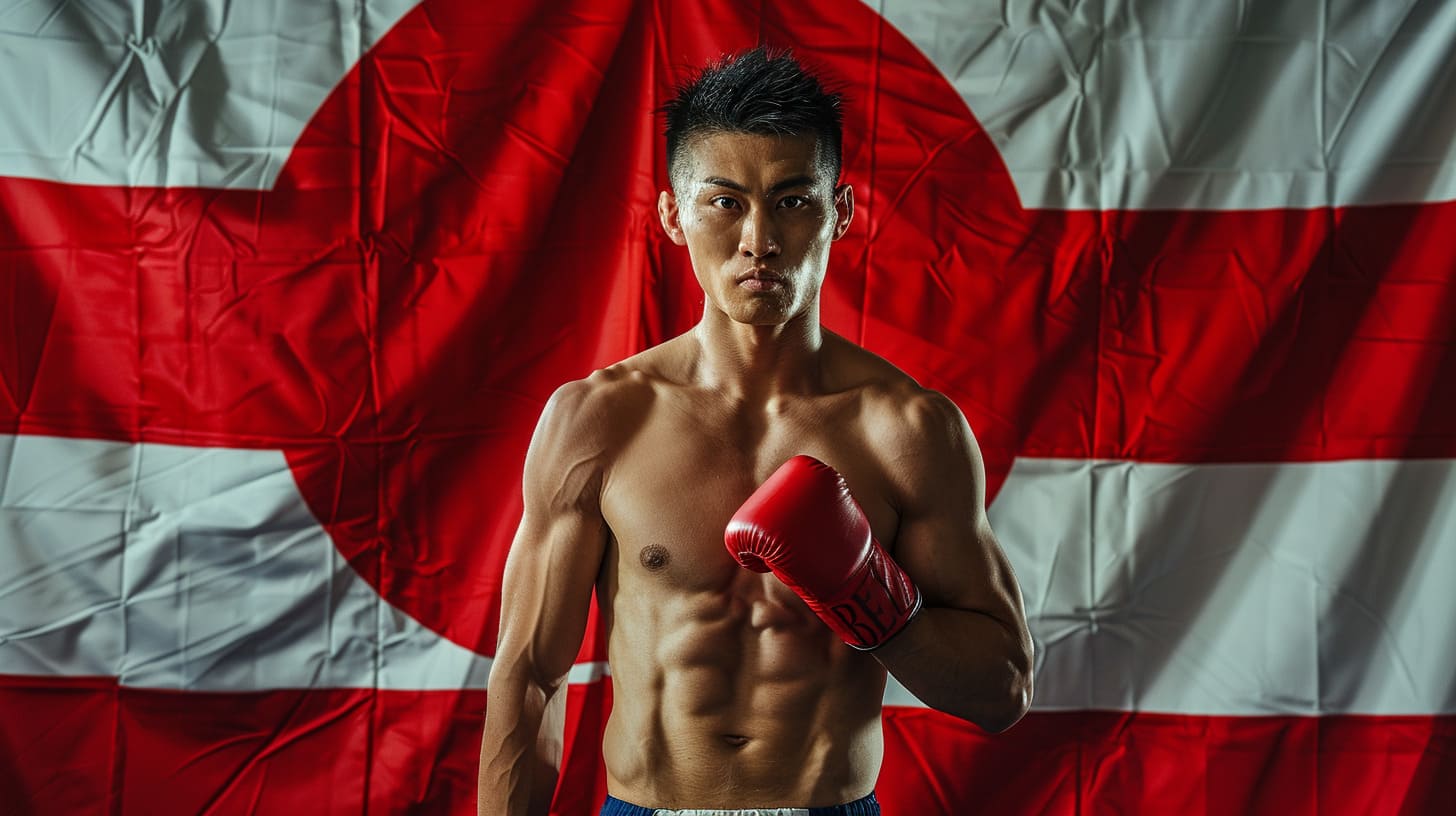Japanese boxing style, a stand-out approach within the world of pugilism, combines traditional boxing techniques with a disciplined mindset rooted in martial arts philosophy. This meticulous and strategic form of boxing emphasizes speed, timing, and a distinct focus on defensive maneuvers, distancing itself from other styles through its methodical application of punches and footwork. Whether you’re a boxing enthusiast or a newcomer eager to understand the intricacies of this unique fighting discipline, let’s dive into what makes the Japanese boxing style a formidable and respected craft in the squared circle.
What Is Japanese Boxing Style?
Let’s dip our gloves into the unique world of Japanese boxing and understand what sets it apart from the fist-flying styles we know. Japanese boxing, while sharing the universal love for a well-placed hook or an uppercut, brings its own flavor to the ring with a blend of traditional precision and modern agility.
Japanese boxing is really something special. It’s not just about throwing punches; it’s an art that mixes respect, hard work, and being super smart in the ring.
It’s All About The Basics
Let’s break it down to what really matters:
- Hard Work: Boxers in Japan are all about training hard. They put in a lot of effort to get better every day.
- Respect: They also make sure to show a lot of respect. This means being polite to everyone, from their opponents to their trainers and the sport itself.
- Being Smart and Precise: It’s super important to be smart about how they move and punch. Every action counts.
When it comes to fighting, expect quick punches, strong hits, and super smart moves, all done at the right time.
How They Stand and Move
The way boxers stand and move is key:
- Standing Tall: They stand up straight which helps them move quickly and keep their guard strong.
- Quick on Their Feet: Their footwork is really light and fast. This lets them move in close quickly or back away when they need to.
Defending Themselves
- Strong Guard: They keep their hands up high to protect themselves and be ready to hit back.
- Moving to Dodge: They’re great at dodging by moving their heads and bodies, making sure they’re not easy targets.
What Makes It Unique
Japanese boxing stands out because of a few cool things:
- Quick and Smart: They focus on being fast and smart, not just strong.
- Moving in a Unique Way: They move in a way that’s hard for others to guess, which can really throw off their opponents.
- Thinking Ahead: They play it smart, trying to outthink the other person, not just outfight them.
So, Japanese boxing is like a super fast, brainy chess game but with the added excitement of a martial arts movie. It’s not just about being strong; it’s about being smart, respectful, and working really hard.
Signature Moves & Strategies of Japanese Boxing
1. The Art of Tameshiwari (body hardening)

In the heart of Japanese boxing lies the practice of Tameshiwari, which refers to the method of hardening the body to absorb and deliver powerful blows. This technique isn’t about sheer muscle mass; it’s about conditioning the body to withstand hits and turn the fighter’s limbs into iron rods.
- Continuous Conditioning: Tameshiwari requires daily practice to toughen up key points used for blocking and striking.
- Psychological Fortitude: Building mental toughness to push beyond pain boundaries.
- Repetitive Striking: Hitting hard surfaces repetitively to strengthen knuckles, elbows, and shins.
Famous practitioner, Yūki Nonaka, is known for his almost supernatural ability to absorb punishment and outlast his opponents in the ring. His relentless body conditioning is a testament to Tameshiwari’s effectiveness.
2. Sashi-ashi (swift footwork)
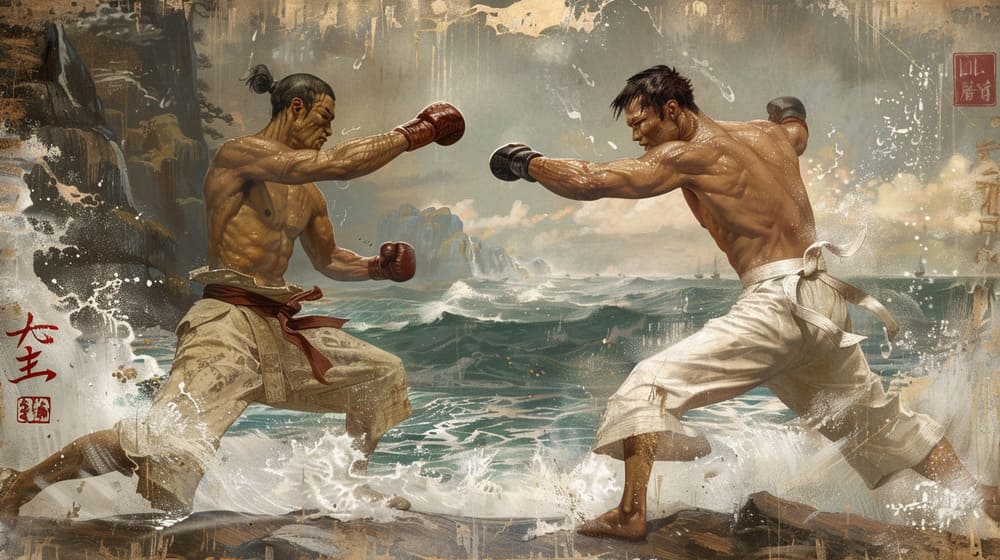
The Japanese boxing scene reveres the mastery of sashi-ashi, swift and evasive footwork that allows fighters to flow around their opponents like water. It’s about strategic placement, dodging attacks with grace and striking from angles that the opponent least expects.
- Balance and Agility: Maintaining stability while moving quickly.
- Angle Advantage: Creating offensive opportunities by changing angles.
- Evasion Tactics: Dodging rather than blocking, to conserve energy and counter swiftly.
Consider Masamori Tokuyama, a legend who danced around his challengers, often leaving them swinging at air. His footwork mastery was pivotal in achieving his remarkable record in the super flyweight division.
3. Hyōshi (rhythm disruption)
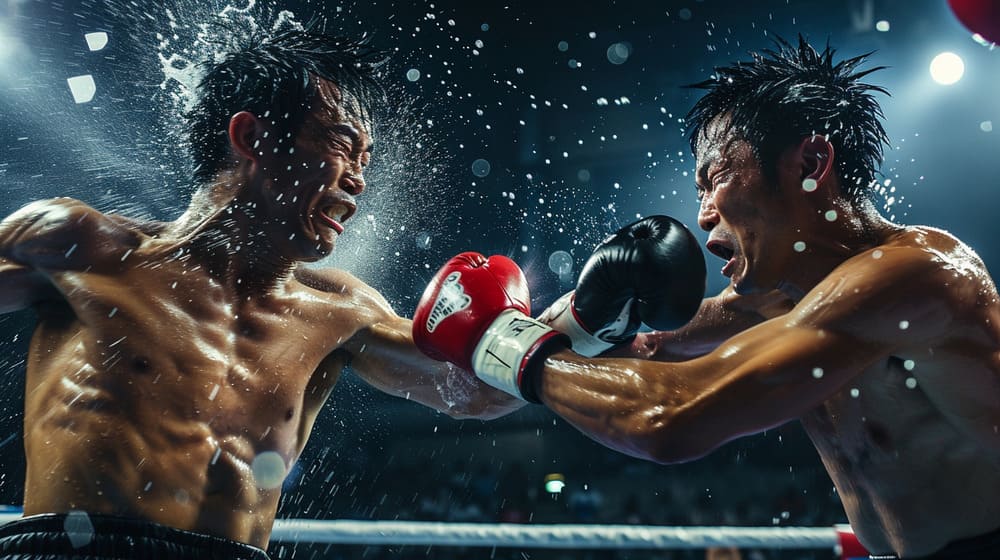
Finally, the concept of Hyōshi, or rhythm disruption, plays a critical role. Japanese boxers are adept at disrupting the flow of a bout, using varied rhythms to confuse and break the timing of their adversaries.
- Pacing Variations: Alternating between fast flurries and deliberate punches to disrupt opponent’s timing.
- Feinting: Deceptive movements to draw out a reaction.
- Unpredictable Combos: Striking with uncommon combinations to keep the opponent guessing.
The legendary Fighting Harada used Hyōshi masterfully, often observed leading opponents into a false sense of rhythm before unleashing unpredictable, fight-ending combinations.
These signature moves and strategies epitomize the depth and thoughtfulness of Japanese boxing. They showcase how intellectual cunning, paired with rigorous physical training, can elevate the sweet science to new heights. Whether it’s the rock-solid resilience from Tameshiwari, the catlike agility of sashi-ashi footwork, or the tactical trickery of Hyōshi, the Japanese boxing style melds mind and body in a fascinating and effective dance of discipline.
Challenges and Limitations
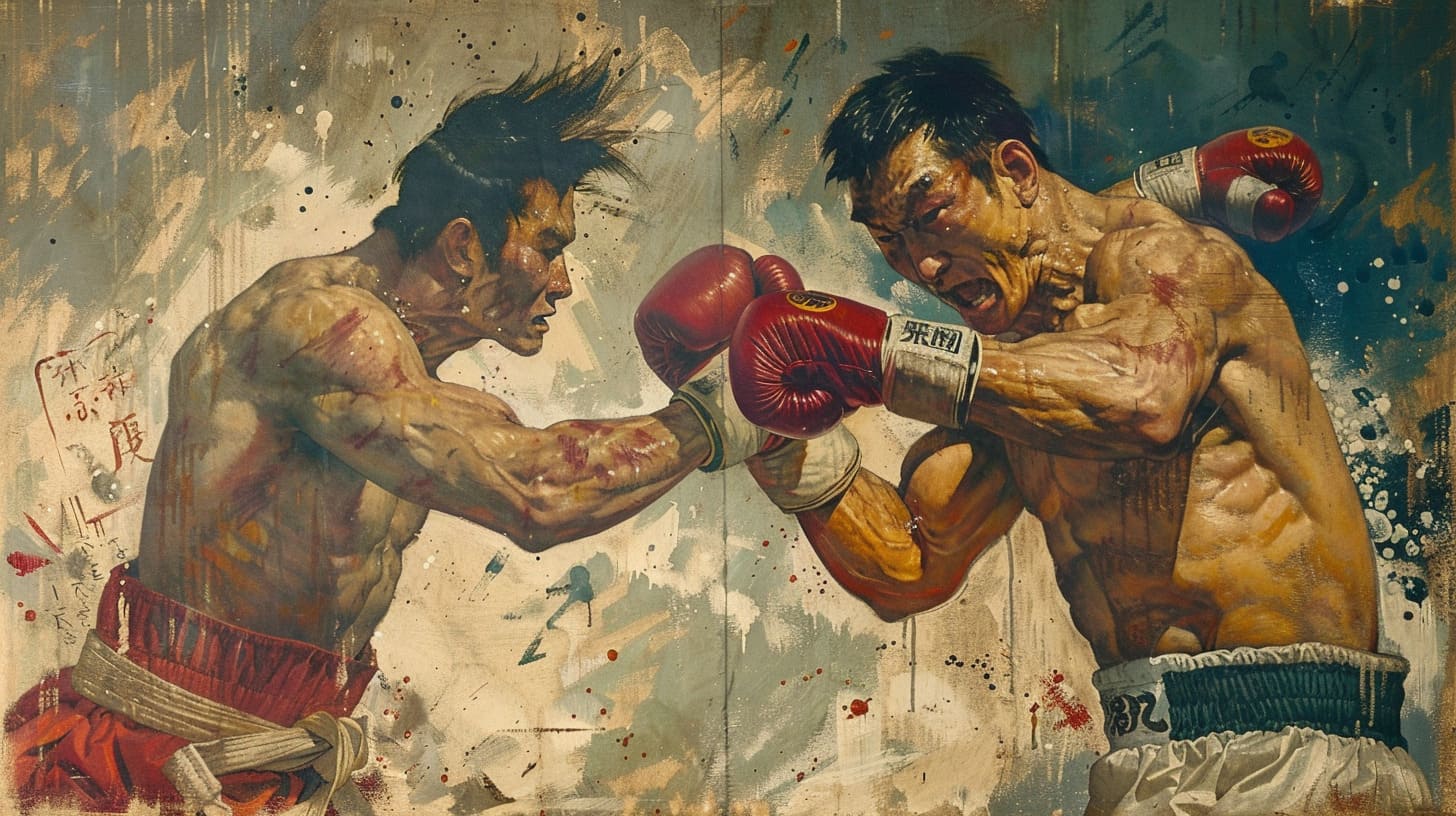
Stepping into the world of Japanese boxing style, it’s crucial to recognize that while it has its virtues, it also comes with its fair share of challenges and limitations. Like any fighting discipline, it’s not a one-size-fits-all technique and understanding these aspects can be as important as honing the skills themselves.
The Benefits of the Japanese Boxing Style
Japanese boxing style, revered for its precision and effectiveness, holds an esteemed place in the ring. Here’s why many fighters choose to adopt these techniques:
- Efficient Movement: Maximizing energy use with minimal and precise movements.
- Defensive Posture: Emphasis on a strong, well-guarded stance to mitigate incoming attacks.
- Technical Strikes: Focus on accuracy and timing over brute strength for scoring points and creating openings.
- Endurance: Conditioning that emphasizes stamina to outlast opponents in longer bouts.
- Mental Discipline: A strong mental game that fosters focus and strategic thinking during matches.
When it comes to competition, knowing when to employ the Japanese boxing style can give a fighter a tactical edge:
- In matches against aggressive opponents who may exhaust themselves quickly.
- Against less disciplined fighters where precision can exploit openings.
- In bouts that are expected to go the distance, where endurance prevails.
- When facing an opponent who relies excessively on power punches.
The Drawbacks of the Japanese Boxing Style

Despite its strengths, the Japanese boxing style isn’t without drawbacks, and understanding these can help a fighter both in adopting the style and in facing someone who uses it:
- Lesser Aggression: The style’s conservative approach may lead to scoring fewer dramatic knockouts.
- Predictability: A structured style can be studied and anticipated by savvy opponents.
- Close-Range Vulnerability: Fighters who excel at close-range brawling can disrupt the technique’s effectiveness.
- Adaptability Issues: Rigid adherence to the style can lead to trouble when facing unorthodox or highly adaptable fighters.
- Physical Limitations: The style may not suit fighters who rely on sheer power and less on finesse.
Opponents might exploit these limitations by:
- Adopting an unpredictable and varied fighting style to unsettle the Japanese boxer.
- Closing the distance quickly to nullify the style’s emphasis on range and positioning.
- Aggressively attacking in the early rounds to pressure fighters who prefer a more paced approach.
- Using feints and unconventional moves to break the fighter’s rhythm and defensive guard.
- Leveraging power punches that capitalize on moments when the Japanese boxer is committing to their precise strikes.
Understanding the sweet spots and potential pitfalls of the Japanese boxing style not only enlightens fans but also equips fighters with the knowledge to either master this technique or dismantle it. Remember, in the ring, it’s as much about knowing your style as it is about knowing your opponent’s.
Defending Against Japanese Boxing Style
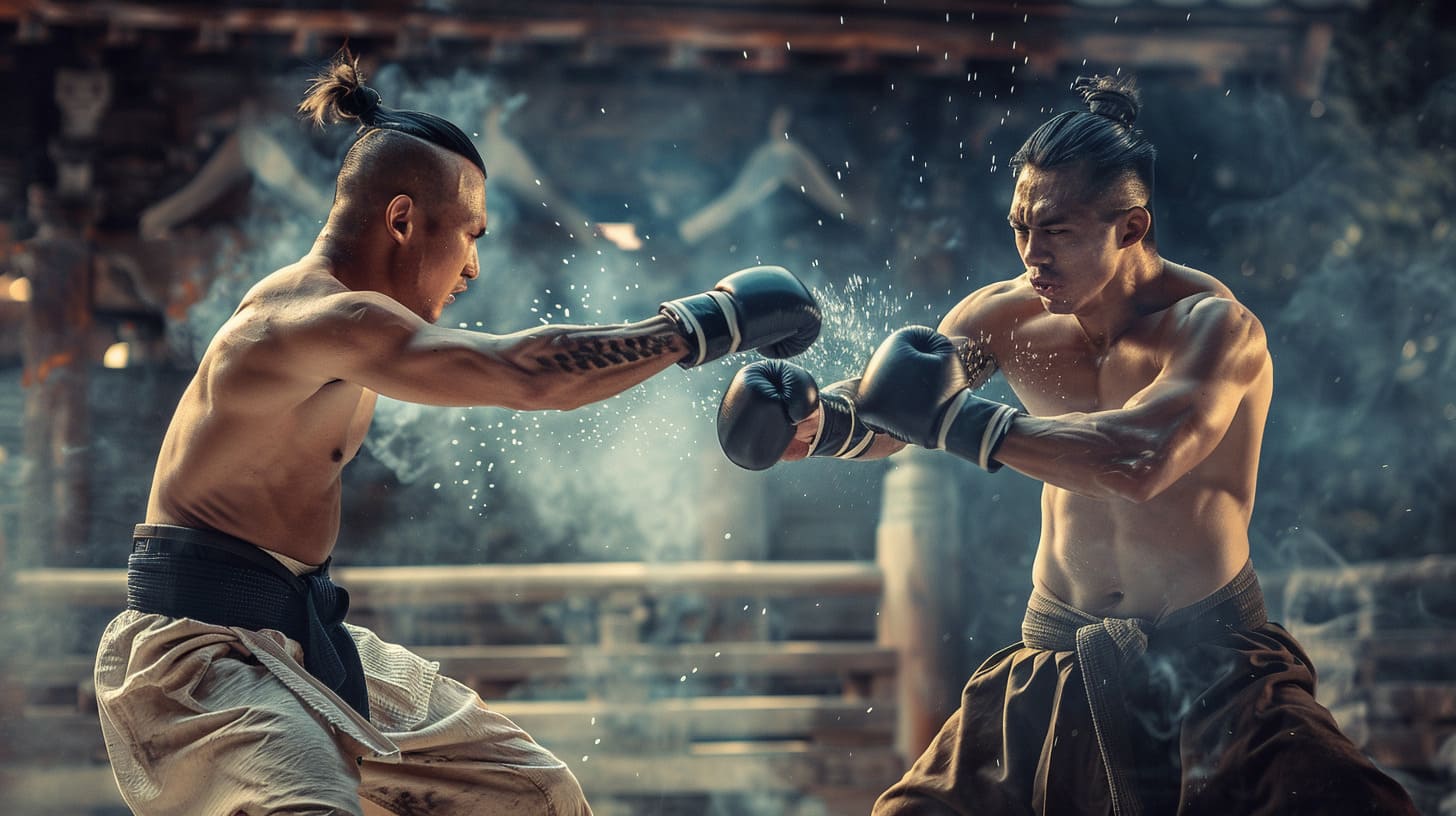
When you step into the ring with a fighter trained in the Japanese boxing style, you know you’re in for a unique challenge. This style, known for its fierce intensity and technical precision, can throw off even the most experienced boxers. But fear not! We’ve got some tried-and-tested strategies that’ll help you hold your ground and keep those swift strikes at bay.
Japanese boxing places a heavy emphasis on straight punches and a solid defense. So, how do you turn the tables on a style that’s already so defensively sound? Let’s break it down into easily digestible tips:
Recognizing the Rhythm
Japanese boxers are rhythmic fighters; they establish a fighting cadence that can be both mesmerizing and tactical. To avoid playing into their hands:
- Watch for patterns: Every fighter has a rhythm. Spot it, and you’ve got a roadmap to disrupt their flow.
- Vary your timing: Mix up the pace with feints and irregular attacking rhythms to create openings.
- Counter on beat: Time your defensive moves and counters in sync with their pace to catch them off-guard.
Tighten Up Your Guard
Solid defense starts with a good guard, and against straight shooters like Japanese boxers, it’s non-negotiable. Here are some specifics:
- Use a high guard: Keep those gloves up! Protect against their efficient jabs and crosses.
- Close the gaps: Ensure there’s no easy path to your head or body. Minimize space and cover up.
- Counter immediately: Make them second guess their attack; a quick counter can make them hesitant.
Master the Art of Movement
Agility is key. You’ll need to dance around those laser-focused strikes with some fancy footwork:
- Stay mobile: A moving target’s harder to hit. Pivot, sidestep, and use the ring to your advantage.
- Control the distance: Manage the space between you and your opponent to dictate the flow of the fight.
- Use angles: Sideways movement and attack angles can help you avoid direct hits and create counter opportunities.
Now, for those additional nuggets of wisdom to elevate your defense game:
Mind the Clinch:
If the punches start raining, don’t be afraid to tie up your opponent. A well-executed clinch can disrupt their momentum and give you a moment to recalibrate.
Focus on Recovery:
In the event that you do take a hit, practice quick recovery tactics. Tuck in, breathe, and reset your stance with as little delay as possible.
Conditioning is Key:
Lastly, ensure your conditioning is top-notch. Stamina and endurance will keep your defense sharp throughout every round, letting you maintain the necessary pace to counter the Japanese style.
Understanding and applying these tips can significantly level the playing field against a Japanese style boxer. Keep these pointers in mind, sharpen your skills, and you’ll be ready to confidently face the discipline and artistry that this boxing tradition brings to the ring.
Notable Practitioners
Let’s get acquainted with some of the remarkable fighters who have given the Japanese boxing style its well-deserved reputation. They’ve not only etched their names into the history books with their fantastic skills and achievements but also influenced countless others through their dedication to the sweet science.
1. Masahiko “Fighting” Harada
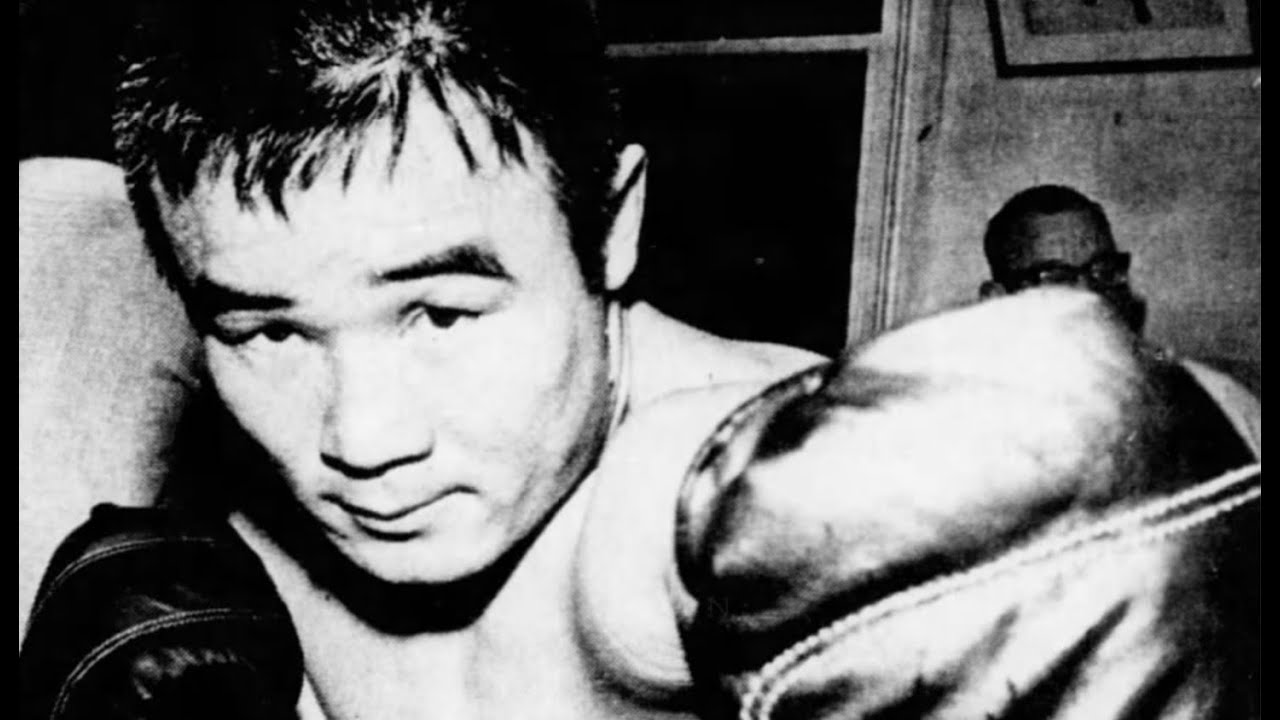
A whirlwind in the ring, Masahiko “Fighting” Harada is a name synonymous with tenacity and skill in Japanese boxing. This flyweight and bantamweight legend made waves with his relentless pressure and formidable body attack, carving out an indelible legacy in the boxing world.
Masahiko “Fighting” Harada once said, “I was lucky to win and I’m just too happy to say anything else.”
This quote reflects his humility and gratitude despite his remarkable achievements in boxing
- Career Highlights: Harada became a two-division world champion and a national hero, outmaneuvering opponents with his swarming style and iron will.
- Memorable Moment: His upset victory over Eder Jofre, one of the greatest bantamweights of all time, to claim the world title stands as a testament to his fighting spirit and strategic acumen.
2. Yoko Gushiken
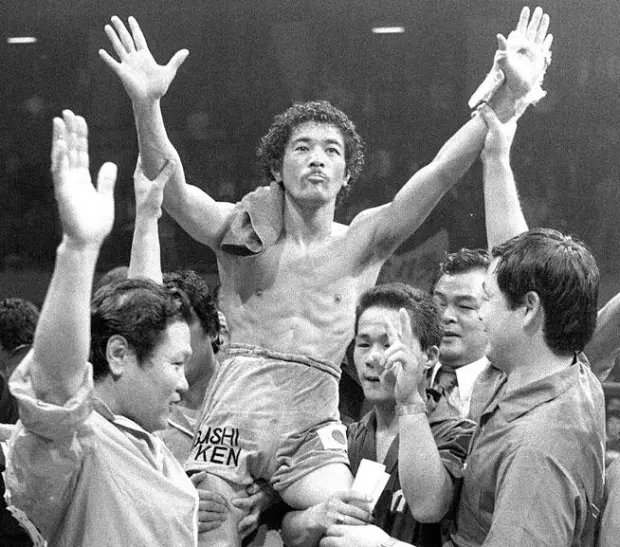
Yoko Gushiken, also affectionately known as “Fierce Eagle,” soared high in the boxing landscape with his precise combinations and exceptional ring IQ. His tenure as a champion holds a special place in the annals of the sport.
- Career Highlights: Gushiken defended his WBA light flyweight title an impressive 13 times, demonstrating his skill and dominance during the late 1970s and early 1980s.
- Memorable Moment: His spirited performance in defending his title against former champion Jaime Rios showcases his mastery and the heart of a champion.
3. Naoya Inoue
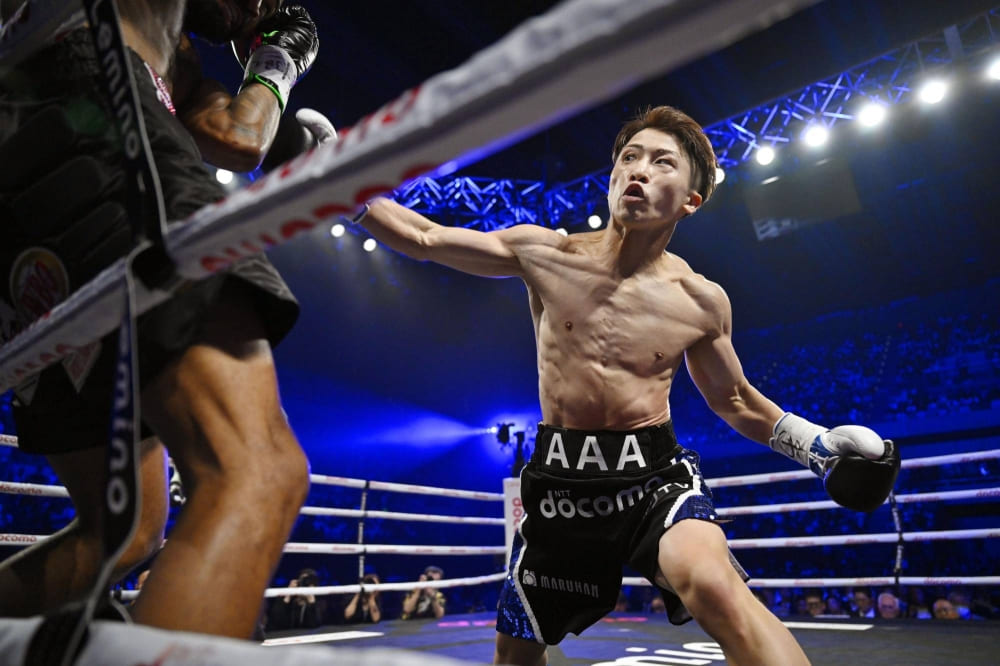
Step into the modern era and meet Naoya “Monster” Inoue, a boxer who perfectly encapsulates the evolution of the Japanese boxing style. His power and precision place him among the current pound-for-pound best and have boxing enthusiasts singing his praises from all corners of the globe.
- Career Highlights: Inoue’s multi-division world championships and explosive power have earned him accolades as well as a rapidly growing fan base.
- Memorable Moment: His thrilling victory in the World Boxing Super Series, where he unified the bantamweight titles and claimed the Muhammad Ali Trophy, put his incredible talent on full display.
These boxers exemplify the Japanese boxing style’s emphasis on technique, resilience, and the strategic mind-game that forms the basis of this fighting approach. Each one has contributed greatly to the sport, inspiring new generations of fighters to step into the ring and pursue greatness.
Training and Conditioning
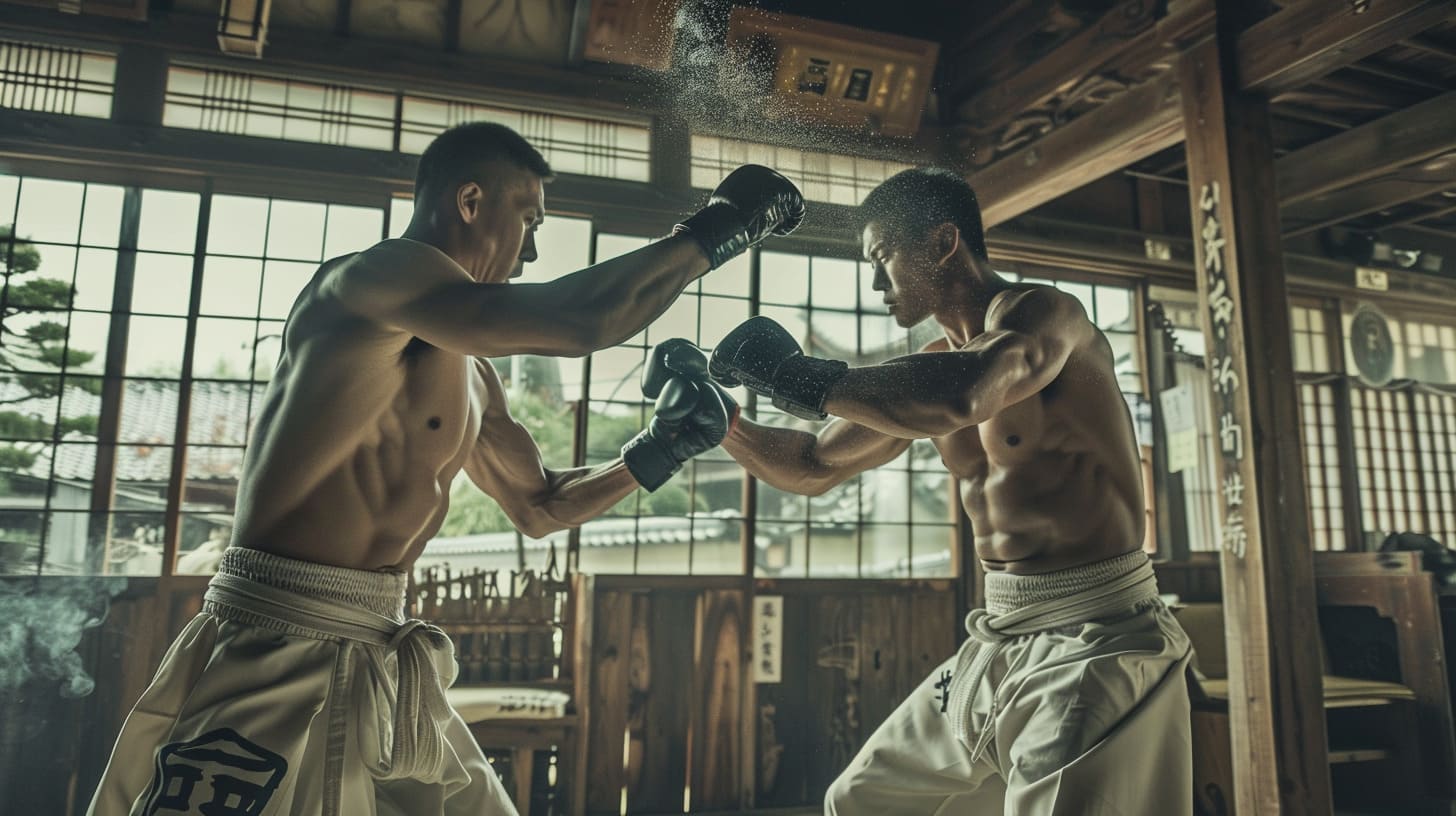
To start syncing with the rhythm of Japanese boxing style, let’s get into the nitty-gritty. You’re looking at drills that are a combo of laser-sharp precision and cat-like agility. Get ready to burn because these methods aim to perfect your form and elevate your game.
- Shadow Boxing with Emphasis on Footwork: Become your own opponent and glide across the floor. Pivot, bob, and weave, imitating the light-footed movement that Japanese boxers are known for.
- Speed Bag Drills: It’s all about velocity. Your fists should tap the bag with rapid succession, honing your reaction time and hand-eye coordination reminiscent of a Japanese boxer’s quick jabs.
- Focus Mitt Workouts: Pair up and get ready to strike with intent. Sharp, controlled punches are the key here — think more sniper, less shotgun.
Building Stamina and Endurance
Japanese boxers are endurance beasts, and here’s how you can build a tank that just won’t quit:
- Interval Running: Sprint, jog, sprint. Repeat. This isn’t a leisurely run in the park; it’s tailored to boost your in-ring stamina.
- Jump Rope Sessions: Incorporate varied speeds and footwork patterns to keep your heart rate up and feet nimble.
- Circuit Training: Rotate through a series of exercises with minimal rest. Push your limits but maintain your form—precision is still king.
Additional Tips and Strategies
To truly embrace the essence of Japanese boxing, it’s not just what you do; it’s how you do it. Here’s a quick list of tips to keep your training on track:
- Focus on Precision: Don’t just throw punches to throw punches. Aim, execute, and make each move purposeful.
- Steady Pacing: Balance your workout intensity. Sprinting the marathon won’t win the race.
- Breathe with Intention: Oxygen is your fuel. Controlled breathing sustains you through those grueling sessions.
- Adaptability is Key: Keep tweaking your routine. What works for one may not work for all. Listen to your body and adjust accordingly.
- Engage Your Core: A solid core stabilizes your body, giving your punches that extra oomph.
By integrating these drills, exercises, and strategies into your routine, you’re not just training your body; you’re sculpting your approach to embody the prowess and poise of the Japanese boxing style. Keep at it consistently, and you’ll find yourself stepping into the ring with a newfound confidence and technique that pays homage to the Land of the Rising Sun.
Final Thoughts
Let me leave you with this punchy wrap-up: Japanese boxing style is no mere fighting tactic; it’s a harmonious blend of mental fortitude and physical precision. From the disciplined defense to the strategic offense, this approach to boxing is about much more than throwing a punch—it’s about embodying the soul of a warrior. The way of the Japanese boxer is not just in the ring; it’s a lifestyle, demanding respect, perseverance, and above all, the heart of a lion. So, whether you’re an aspiring boxer or a seasoned fan, take these insights, marvel at the mastery of notable practitioners, and let the spirit of Japanese boxing inspire your own journey in the sweet science. Remember, every fighting style tells a story, and Japan’s is one of elegance, efficiency, and endurance. Now, lace up, lean into your training, and maybe one day, you’ll spar with the shadows of these greats. Keep fighting, keep learning, and let the art of Japanese boxing style guide you to your own legacy. Ready to step into the ring with a new perspective?
Now, tell us: are you inspired to adopt elements of the Japanese boxing style, or perhaps you’re eager to train in another discipline? Share your thoughts and let’s talk all things boxing!
Additional Resources
Books
- Boxing for MMA: Building the Fistic Edge in Competition & Self-Defense for Men & Women by Mark Hatmaker — Although not exclusively about Japanese boxing, it breaks down striking techniques that are foundational in many boxing styles. Get it on Amazon
- The Sweet Science of Fighting: Standing Up by Kazumi Tabata – Gain insights into the dynamics of fighting on your feet, with principles that underpin many martial arts, including Japanese boxing techniques. Get it on Amazon
Articles
- Cross-Training In Boxing: An article examining the benefits of integrating other martial arts, including Japanese disciplines, into your boxing training to improve agility and technique. Go to website
Videos
- Japanese Boxing Techniques: A YouTube channel that analyzes professional Japanese boxers and their techniques, offering slow-motion breakdowns and expert commentary. Watch on YouTube
- Japan’s Boxing History: Documentaries that take you through the evolution of boxing in Japan, including legendary fights and fighters that have defined their boxing culture. Explore on YouTube
Websites
- Budo Japan: An exceptional site if you’re looking to deepen your understanding of Japanese martial arts, including boxing, offering articles and instructional content. Go to website
